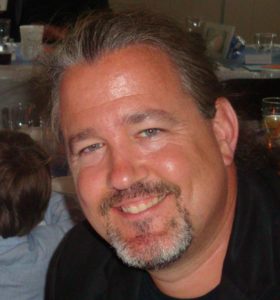How To Do “New”
2014. Kind of hard to fathom how much time has passed. If you’re anywhere near my age, you probably recall looking ahead at the year 2000 and thinking, Surely, we’ll have flying cars, ray guns, and teleporters by then. Of course, we didn’t and still don’t. But time has passed and a lot has happened in the world of speculative fiction. In fact, a case could be made that Speculative Fiction has ruled the entertainment world for quite some time now. Harry Potter, Artemis Fowl, Percy Jackson, Divergent, Twilight, Hunger Games, Jackson’s Lord of the Rings and Hobbit movies, Game of Thrones, A Cast of Stones … on and on.
But what’s next?
What will be the next work of speculative fiction to capture the world’s imagination? And perhaps, more importantly, what role will Christians have in the speculative fiction literary universe? We are, after all, fashioned in the image of our Creator, who by definition is The Creative One. And we are exhorted to bring God glory, mostly by reflecting his character to the world. So what will we do with this new year? Will we write something new?
I hope so.
We’ve all rued the Christian Publishing tendency to see what’s hot in the world and put out a Christian-friendly complement. Nothing wrong with that. It’s market analysis and trying to turn a profit. Heck, my pirate adventures: Isle of Swords and Isle of Fire would never have happened if it weren’t for Disney’s Pirates of the Caribbean movies becoming so popular. Still … there’s so much more to writing than imitation. So much more to being creative.
So how do we do it? How do we write something new?
It doesn’t help to read articles that tell us there really are only 10 different plots. Or, something that says you cannot be original because it’s all been done. That’s just balderdash. It’s not like Tolkien was the first writer to ever use elves, dwarves, or wizards. But Tolkien was original. He was creative. He did write something new. We can as well. In the rest of this article, I’d like to explore how we do “new.”
I. Observe: the best writers soak in the world around them. Conversations on the metro, storm clouds approaching, a neighbor whose chihuahua has only three legs. Life is full of quirks, and quirks are fun to read about. They make characters connect with us and entertain us.
II. Embrace Conflict: when we rub any two materials together, we get friction. In our homes, in our schools, in our workplaces, there is bound to be conflict. Conflict usually comes from unmet goals or expectations, clashing of goals and ambitions, or needs for power or attention. I don’t suggest you start conflict on purpose, but rather that you experience it on a new level. Analyze it afterward. Why did the conflict occur? What goal did each party seek? Why did it hurt? Fuel your story with such conflicts, goals, and motives, but drop the conflict into a different context. You might have been passed over for a promotion at the law offices of Grab, Tackle, and Snark, so you know how that feels. You know the hurts. You know the motivations. Take all that good, raging stuff and give it to a raptor pilot in a steampunk pirate adventure. No matter how new the concept, the successful stories will share conflicts we all experience.
III. Genre Mixing: We love to categorize, don’t we? It makes things more manageable. As an English teacher, I’ve spent a lot of time with students analyzing the characteristics of genres. What makes a story a fantasy versus mystery verses historical, etc.? But recent blockbusters have stepped all over genre boundaries. One of my favorite series is Jim Butcher’s Dresden Files. It’s a mash up of hard-boiled-detective and horror and Celtic mythology and every movie monster you can think of. It’s fantastic fun and feels very fresh.
 IV. Research: Put it this way … the Discovery Channel rocks! Look at the newest technologies or technologies just on the horizon. Excellent fodder for building a story that feels new. I happened to catch a video about brain science and dream research. It was remarkable, and it lead to a new story idea: Dreamtreaders. Turns out, Thomas Nelson liked the idea as well, and now I have a new trilogy coming out. Dreamtreaders #1 should be out May 2014.
IV. Research: Put it this way … the Discovery Channel rocks! Look at the newest technologies or technologies just on the horizon. Excellent fodder for building a story that feels new. I happened to catch a video about brain science and dream research. It was remarkable, and it lead to a new story idea: Dreamtreaders. Turns out, Thomas Nelson liked the idea as well, and now I have a new trilogy coming out. Dreamtreaders #1 should be out May 2014.
V. Ask What If? So many hit stories aren’t really new in their entirety, but they succeed in altering some key element, twisting it off center, and therefore, making it new. Stephen King was credited with the technique of simply asking yourself, What if? Begin with the usual, the mundane, the everyday, and ask what would happen if some variable changed or inserted itself into the situation? Shopping in a grocery store did it for Mr. King. While shopping and politely nodding to people he vaguely knew, he wondered what would happen between them all if they were trapped in the grocery store. Trapped by, oh … I dunno … a mysterious fog full of man-eating creatures. Yep, that would amp the tension a little and give it that fresh feel that we’re all looking for. So ask “What if?”
So, here’s to hoping you write something -new- this year. Honor God by reflecting His creativity, and watch your stories soar.
– – – – –
 Wayne Thomas Batson is the Bestselling author of fourteen adventure novels including the fan favorite Door Within Trilogy, the pirate duo Isle of Swords and Isle of Fire, the 7-book fantasy epic Dark Sea Annals, and a supernatural thriller for adults called Ghost. A middle school Reading and English teacher for 23 years, Batson loves to challenge—and be challenged by—his students. So, when he began writing stories to supplement the school district’s curriculum, it was his students who taught their teacher a lesson. Batson’s students were so taken by one of the stories that, over a thirteen year span, they pushed him to make it into a full-length novel. That story became The Door Within. Since then, Batson’s students continue to be his frontline editors. Says Batson, “Two things you can count on from middle school students: Intelligence and Honesty. Kids are so much more perceptive than a lot of us ‘Big Folk’ give them credit for. And when something’s not right in the story, they’ll tell you about in very clear terms.” With over half a million books in print, Batson believes his books appeal to so many kids and adults because, at a deep level, we all long to do something that matters, and we all dream of another world.
Wayne Thomas Batson is the Bestselling author of fourteen adventure novels including the fan favorite Door Within Trilogy, the pirate duo Isle of Swords and Isle of Fire, the 7-book fantasy epic Dark Sea Annals, and a supernatural thriller for adults called Ghost. A middle school Reading and English teacher for 23 years, Batson loves to challenge—and be challenged by—his students. So, when he began writing stories to supplement the school district’s curriculum, it was his students who taught their teacher a lesson. Batson’s students were so taken by one of the stories that, over a thirteen year span, they pushed him to make it into a full-length novel. That story became The Door Within. Since then, Batson’s students continue to be his frontline editors. Says Batson, “Two things you can count on from middle school students: Intelligence and Honesty. Kids are so much more perceptive than a lot of us ‘Big Folk’ give them credit for. And when something’s not right in the story, they’ll tell you about in very clear terms.” With over half a million books in print, Batson believes his books appeal to so many kids and adults because, at a deep level, we all long to do something that matters, and we all dream of another world.










































I’ve been reading about how high concept is what sells, no matter the genre. Harry Potter was popular because it was about school. Everybody can relate to school. It’s high concept. School, first love, parents, bullies, food, laundry, heartache, feeling like an outcast–that’s all high concept that everybody can relate to. Stan Lee has this down to a science. Think of X-men. A group of outcast young people who get superpowers at puberty. High concept! We’ve all felt that way.
I’ve been reading some truly excellent Christian epic fantasy recently. I’m working on a trilogy. Will mine become genre changing? I doubt it. But it might, it is unique. All I know is that I believe the Lord wants me to write it. The results are up to Him. I can only do it if He anoints me, and it’s fun ride.
Totally vouch for the “what if?” method.
Good stuff. 🙂
“There is nothing new under the sun” Ecclesiastes 1:9
Just a little counter point here for Wayne Thomas Batson’s thoroughly cool tips, that I hope will take away any pressure to write something “new” which might make writers like myself, choke up and not write at all.
There are between 30-40 plots that exist in the storyteller’s library.
Let me say that again, there are no new plots, only new twists on the old standbys.
To that, a writer can add roughly 12 master character archetypes, and 3 different narrative points of view (first person, second person, third person)*.
So that means every writer has in their recipe/story box the same ingredients:
30-40 plots
12 character archetypes
3 narrative voices
These are the same ingredients that ever storyteller has had to work with since one person sat down at a fire and said to the others “A long time ago in place quite like this one…” And yet from that moment until now, people have been telling stories. And not the same story either.
So how can a writer come up with something exciting?
There’s one piece which is different in each story, and that is the tale-teller.
We each get the same ingredients; plot, character, and narrative voice. It is our unique perspective and experience that makes the stories different. It’s the writers choices of how much of each item, and which of each item to use that makes the story memorable.
The writer is the secret ingredient, the piece that makes the story a different flavor than the others. This is true, even within a genre.
Here’s an example:
Dream Treaders by Wayne Thomas Batson
Wake by Lisa McMann
Gossamer by Lois Lowry (author of The Giver)
Dream Hunter by Elizabeth Knox
All of the above books are about people who can enter/manipulate/use dreams to get to another country. All of them are different, because of their writer took the ingredients and shifted them around in a unique way to come up with their own tale.
So be bold! Be daring! Study your ingredients and offer your stories to the rest of us, we can’t WAIT to taste what you’ve “dreamed” up.
* Omniscient Narration is a type of third person and there are other types of third person as well that I’m not listing here.
Hello Wayne,
Excellent discussion! I set out to write Christian fantasy for tweens, having already had a six book kids’ fiction series published. I knew very well my latest work needed to be fresh, since I wanted the project to go book-to-film. I’m also a screenwriter.
My corner of Hollywood was watching. I applied all of the brainstorming techniques that film pros use to make the next blockbuster. But since when is human effort ever enough? I brought my need to the LORD, as specific as prayer can get: “Lord Jesus, will You give me this new idea? Make it a grabber, please?”
I’d been looking at angels, but you can’t have an angel protagonist no matter what TV has done with them. Real angels don’t have angst! They know what they’re about!
But as I prayed, the LORD gave me two words: “The Nephilim.”
His idea hit so hard that I went face down on the kitchen floor in worship. You want a “what if?” What if the genes of the Nephilim–those “heroes of old” born of angels and women–resurfaced in a few young teens of today? (Genesis 6 & Numbers 13).
My novel Children of Angels, Winepress Publishing, has won the Gold Medal in the Moonbeam Children’s Book Awards Young Adult/Religion/Spirituality category and Honorable Mention in the Hollywood Book Festival Spirituality category. To the praise of His glory!
New ideas can also generate controversy, and I’ve taken heat for the fantasy premise that Nephilim DNA is angelic rather than demonic, as many Christians insist that is was. I shrug and smile, heft all criticism over to the Lord in praise, and gently remind my few critics that my story is, after all, make-believe. (And, um, the Nephilim are described as “heroes of old, men of renown” in Genesis. I respect archaeologists and ancient language experts, but still, there it is, as the English say.)
My point, and you as much as said this, Wayne, so I’m just reiterating: if you want a fresh idea, seek hard after the giver of all good gifts, whose creativity is unimaginable and who delights to give good things to His children. (James 1:17; Matthew 7:9-11)
Kathryn Dahlstrom
http://www.childrenofangels.net